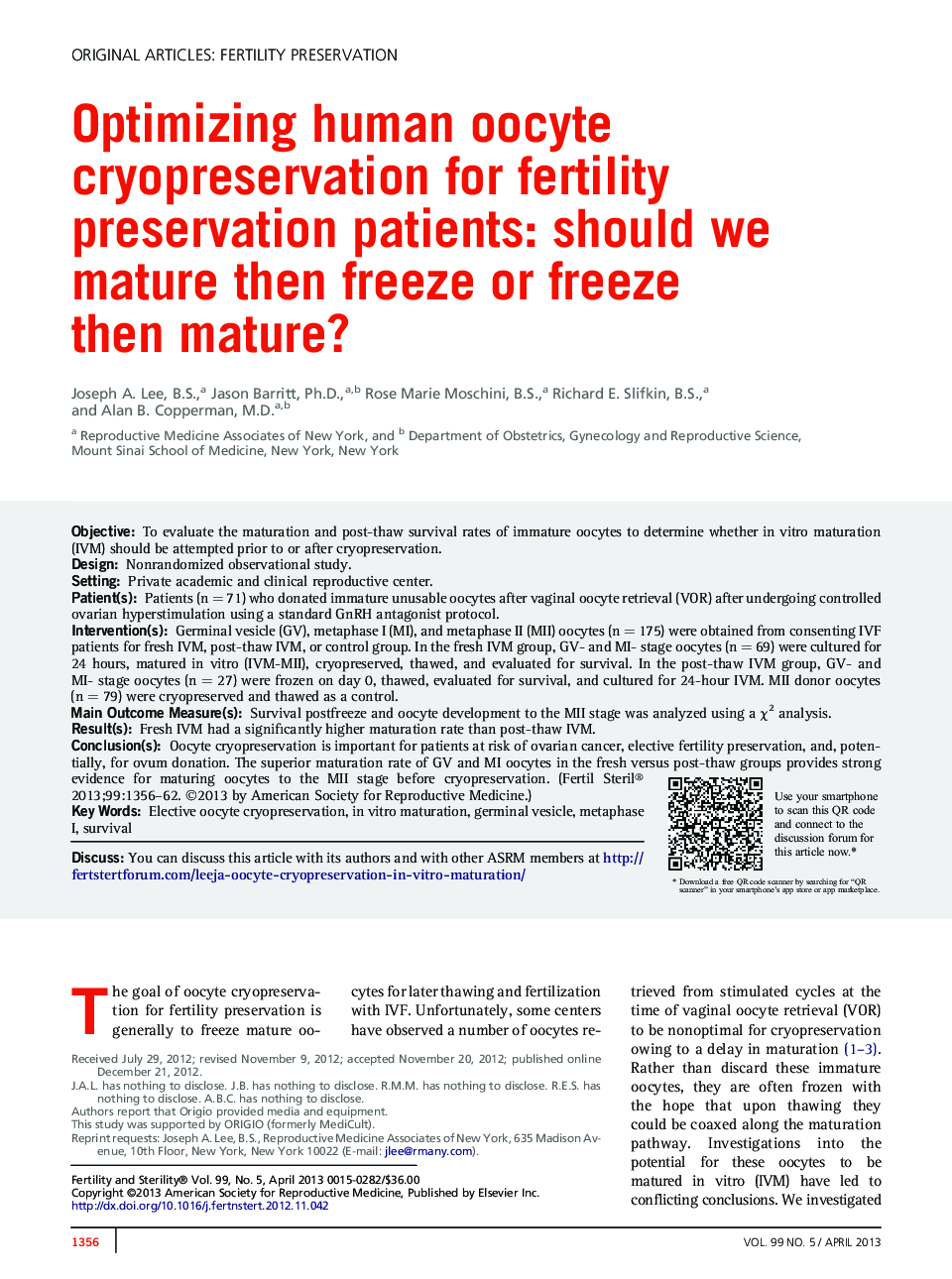| Article ID | Journal | Published Year | Pages | File Type |
|---|---|---|---|---|
| 3939037 | Fertility and Sterility | 2013 | 7 Pages |
ObjectiveTo evaluate the maturation and post-thaw survival rates of immature oocytes to determine whether in vitro maturation (IVM) should be attempted prior to or after cryopreservation.DesignNonrandomized observational study.SettingPrivate academic and clinical reproductive center.Patient(s)Patients (n = 71) who donated immature unusable oocytes after vaginal oocyte retrieval (VOR) after undergoing controlled ovarian hyperstimulation using a standard GnRH antagonist protocol.Intervention(s)Germinal vesicle (GV), metaphase I (MI), and metaphase II (MII) oocytes (n = 175) were obtained from consenting IVF patients for fresh IVM, post-thaw IVM, or control group. In the fresh IVM group, GV- and MI- stage oocytes (n = 69) were cultured for 24 hours, matured in vitro (IVM-MII), cryopreserved, thawed, and evaluated for survival. In the post-thaw IVM group, GV- and MI- stage oocytes (n = 27) were frozen on day 0, thawed, evaluated for survival, and cultured for 24-hour IVM. MII donor oocytes (n = 79) were cryopreserved and thawed as a control.Main Outcome Measure(s)Survival postfreeze and oocyte development to the MII stage was analyzed using a χ2 analysis.Result(s)Fresh IVM had a significantly higher maturation rate than post-thaw IVM.Conclusion(s)Oocyte cryopreservation is important for patients at risk of ovarian cancer, elective fertility preservation, and, potentially, for ovum donation. The superior maturation rate of GV and MI oocytes in the fresh versus post-thaw groups provides strong evidence for maturing oocytes to the MII stage before cryopreservation.
